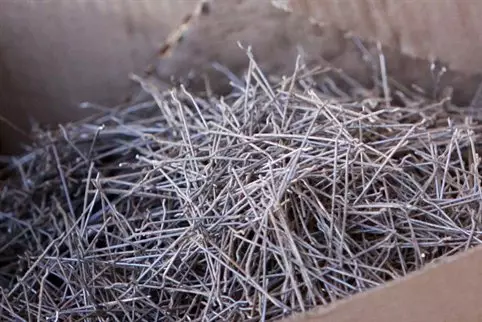In the dynamic realm of construction materials, innovations continually emerge to address the challenges of building durable, resilient structures. One such innovation that has gained prominence in recent years is Steel Fiber Reinforced Concrete (SFRC). This article explores the unique properties of SFRC, its manufacturing process, and the myriad benefits it brings to the construction industry.
Understanding Steel Fiber Reinforced Concrete:
Steel Fiber Reinforced Concrete is a composite material that combines traditional concrete with discontinuous steel fibers. These fibers, typically made of stainless steel, carbon steel, or a combination of both, are dispersed uniformly throughout the concrete matrix. The addition of steel fibers imparts enhanced mechanical properties to the concrete, making it more robust and resilient than conventional concrete.
Manufacturing Process:
The production of Steel Fiber Reinforced Concrete involves a meticulous process to ensure uniform distribution and optimal performance. The key steps in manufacturing SFRC include:
- Selection of Fibers: Engineers choose the type and composition of steel fibers based on the specific requirements of the construction project. Factors such as the intended application, structural design, and environmental conditions influence the choice of fibers.
- Mix Design: The mix design of SFRC involves incorporating steel fibers into the concrete mixture. Careful consideration is given to the ratio of fibers to concrete. Ensuring a homogeneous blend that maximizes the benefits of both materials.
- Mixing Process: The mixing process is crucial to achieving a uniform distribution of steel fibers. Specialized mixers are often employed to ensure that the fibers are evenly dispersed throughout the concrete mixture. Enhancing the overall structural integrity of the material.
Advantages of Steel Fiber Reinforced Concrete:
- Improved Flexural Strength: The inclusion of steel fibers significantly enhances the flexural strength of concrete. This improvement is particularly beneficial in applications where resistance to cracking and bending is crucial, such as in the construction of industrial floors and pavements.
- Enhanced Durability: SFRC exhibits exceptional durability, offering increased resistance to abrasion, impact, and cyclic loading. This makes it an ideal choice for structures subjected to harsh environmental conditions or heavy traffic, ensuring a longer service life.
- Crack Control: Steel fibers act as micro-reinforcements that help control and limit crack propagation in concrete. This is especially advantageous in applications where minimizing crack widths is essential for structural integrity. Such as in bridge construction and seismic-resistant structures.
- Reduced Shrinkage Cracking: Shrinkage cracking is a common concern in conventional concrete. SFRC addresses this issue by mitigating the effects of drying shrinkage. Reducing the likelihood of cracks and improving the overall appearance and durability of the structure.
- Increased Toughness: The toughness of SFRC surpasses that of traditional concrete. This property is valuable in structures that may be exposed to dynamic loads or impacts. Such as industrial floors, tunnels, and precast elements.
Conclusion:
Steel Fiber Reinforced Concrete represents a significant advancement in the construction industry, offering a versatile and durable solution for a wide range of applications. Engineers and builders continue to seek materials that can meet the demands of modern infrastructure. SFRC stands out as a reliable and innovative choice, contributing to the creation of structures that are not only strong and resilient but also sustainable in the long run.

